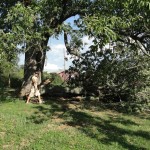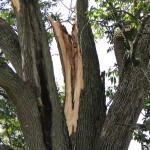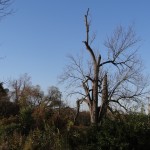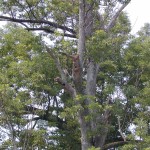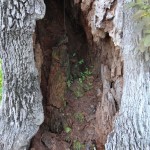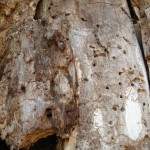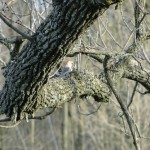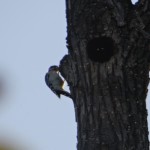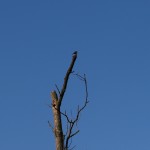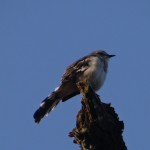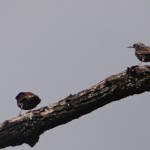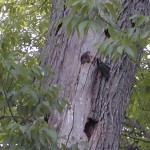I’ve been thinking about a bit of New Year’s photo homage to a gradually failing old warrior of an ash tree, affectionately named “Wogan”–sort of an amalgam between the old pagan Saxon God Wodin who in the quest for sacred knowledge hung himself for nine days from the World Tree.
“The great world tree,Yggdrasil, in Norse cosmology, stood at the centre of everything, and knitted together the nine worlds – the world of the gods, the world of men, and the various worlds in between, inhabited by orcs, frost giants, dragons and other grim denizens of the edgelands. Without the Yggdrasil, nothing could live; when it fell, the world would end.
The Yggdrasil is most commonly associated with one species of tree: the ash. It was the ash which the Old English believed knitted the worlds together, and it was the ash on which the head of the house of the gods was self-hanged, in his agony of dreaming. The ash was the tree of life.”
Wogan is a massive old tree measuring about 14 feet in circumference before the trunk divides and its swooping branches must have covered a good 60 feet in diameter. It has been gradually failing, dropping pieces of itself here and there and succumbing to central rot. In 2011, a major cyclonic windstorm came through and tore down a couple of the multiple trunks. But, it still keeps trying to renew itself by sending out suckers and water sprouts. Like the mythic tree, Wogan has been a host to multitudes.
At this point, forest ecology would refer to Wogan as a “snag” which is a standing dying or dead tree. The National WIldlife Federation writes that snags provide habitats for over a thousand species of wildlife. Cavity dwelling birds like chickadees and woodpeckers nest in them. Brown creepers shelter beneath loose bark. Bats, raccoons and squirrels find homes inside the cavities.
Snags attract insects which serve as food sources for birds and mammals while moss, lichens and fungi grow on the decaying portions of wood. In winter, wildlife will mine snags for insects and food hidden in crevices.
They serve as lookout posts for birds that prefer a high spot to survey their territory or for raptors searching for prey and they provide convenient roosting spots for all manner of birds. Wogan’s lower branches are a favorite resting spot for hummingbirds.
The following photo essay demonstrates how this one ash tree, Wogan, has been fulfilling its role as a beneficial snag.
- After the storm, massive trunk fall.
- Freshly wrought storm damage-acceleration of snagdom
- Wogan’s post storm shape
- Former knots, branches hollowed out by flickers and woodpeckers
- The rot in a main area of trunk, progressing. Plants growing inside.
- Wogan mined by insects.
- Woodpeckers are regularly resident
- Note the flying insects around this woodpecker
- A promonitory branch lures birds to the tip
- Mockingbird perch
- Unfortunately, starlings like snags too
- Note the babies peeking out being fed

